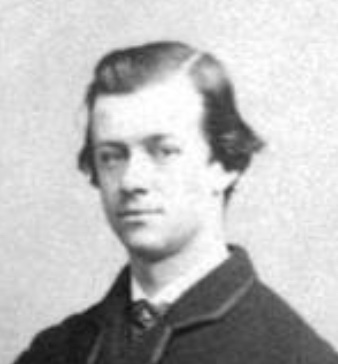
Viscount Milton, photographed in San Francisco, 1863
British Columbia Archives
William Wentworth Fitzwilliam Milton [1839–1877]
b. 1839
d. 1877
Viscount Milton was a British nobleman, explorer, and Liberal Party politician.
Fitzwilliam was the eldest son of William Wentworth-FitzWilliam, 6th Earl FitzWilliam, and his wife Lady Frances Harriet, daughter of George Douglas, 17th Earl of Morton, and was educated at Eton and Trinity College, Cambridge He was epileptic.
Lord Milton had been a traveller from his youth up, and, in spite of a delicate frame and frequent illness, he succeeded in accomplishing substantial geographical work of considerable importance. His uncertain health compelled him to seek fresh life and vigour from time to time in some more bracing climate; and after several journeys to the Continent, and one to Iceland in 1861, he crossed the Atlantic to North America, and visited the regions to the west of the Red River Settlement in the Hudson Bay Territories. ‘The favourable effect upon his health produced by the invigorating climate of the Great Plains, and the charm of the wild life there, induced Lord Milton to return there the following year, in company with Dr. Walter Butler Cheadle [1835–1910], with the view of making a more extensive exploration of the North-West Territory. At that time the gold mines of Cariboo, in British Columbia, were attracting much attention, and the only practicable route to them was the extremely circuitous one by Panama, or the little less indirect and more toilsome journey through United States territory by way of California. Although the rich mining districts of British Columbia lie almost in the direct line across the Continent through British territory, the way was barred by the great chain of the Rocky Mountains; and on each side of the main range lay wide extent of rugged country, covered with dense forest, and in great part unexplored. Lord Milton and Dr. Cheadle determined to make the attempt to discover a way through this difficult and trackless region which separated the plains of the Saskatchewan from the mining districts of British Columbia, and they set out on this expedition in the spring of 1863. The story of this adventurous and toilsome journey, graphically related by Lord Milton and his companion in The North-West Passage by Land, is probably familiar to most of us. Provided with very inadequate resources for such an arduous undertaking, the party endured great hardships and privations before they succeeded in forcing their way by the Yellow Head or Leather Pass, and through the dense forest of the North Thompson River, to the plains of Kamloops. Had Lord Milton enjoyed the full vigour of health, his enterprising spirit would have led him to further geographical research. But the renewed strength, which, in spite of its hardships, he eventually obtained from this journey, did not endure. After the lapse of a few years, ho was compelled by increasing illness to resign the seat in Parliament to which he had been elected after his return, and he once more crossed the Atlantic to North America. The last few years of his life he spent chiefly in the highlands of Virginia; returning to England, however, shortly before his death at the commencement of the present year.
The practical value of Lord Milton’s work has been well shown by subsequent events. His Expedition served, perhaps more than anything else, to direct public attention to the immense value of the southern portion of the Hudson Bay Territories, and to the great importance of establishing a way of communication between the eastern and western portions of British North America. This has been fullowed by the acquisition, by the Dominion of Canada, of the Hudson Bay Territories; and since that was effected, complete surveys have been carried out for a road and railway across the Rocky Mountains into British Columbia. These works have, indeed, been actually commenced; and the line chosen is identical with that followed by Lord Milton’s Expedition. The route traversed by his party, with so much toil and difficulty, will before long complete the link of communication between the Provinces of the Canadian Confederation, and eventually become the great highway to the Pacific through British North America.
- “Lord Milton (Obituary).” Proceedings of the Royal Geographical Society, Vol 21, May 28 (1877):416 Hathi Trust
- Wikipedia. William Wentworth Fitzwilliam Milton
- 1863 Milton and Cheadle through YHP
- — and Cheadle, Walter Butler [1835–1910]. The North-West Passage by Land. Being the narrative of an expedition from the Atlantic to the Pacific, undertaken with the view of exploring a route across the continent to British Columbia through British territory, by one of the northern passes in the Rocky Mountains. London: Cassell, Petter and Galpin, 1865
- — and Cheadle, Walter Butler [1835–1910]. Voyage de l’Atlantique au Pacifique, à travers le Canada, les montagnes Rocheuses et la Colombie anglaise. Paris: Hachette, 1872